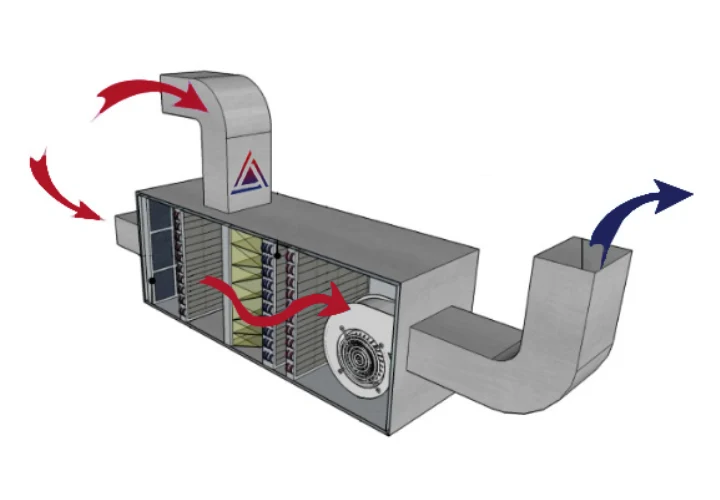
Let’s say you’re checking the specs of your summer air conditioner. You notice that you have got a 3-ton system and are aware that the ton represents the power of your air conditioning unit. But what does your air conditioner truly achieve when it uses all that power, and how efficient is it?
Well, the purpose of your summer air conditioning system is to take the heat out of your house. And this is where understanding the psychrometric chart and processes come in. So, we will start with what psychrometry means, how the summer air conditioner works, and where the Psychrometric lab comes to help.
Psychrometry in Air Conditioning – Knowing the Basics:
Air conditioning is essential to summer comfort, and the psychrometric process is key to how air conditioning systems work. The psychrometric process is the science of air and moisture, and it is used to achieve the desired temperature and humidity in a space. The psychrometric process for summer air conditioning refers to the use of principles of psychrometry to control and regulate indoor air temperature, humidity, and purity in buildings during hot and humid weather.
This process involves a complex interplay of thermodynamic and atmospheric variables, including dry bulb temperature, wet bulb temperature, relative humidity, dew point, and latent heat. The psychrometric process aims to maintain a comfortable and healthy indoor environment by utilizing HVAC (Full form of HVAC – Heating, Ventilation & Air Conditioning) systems that can cool, dehumidify, and filter the air to provide adequate ventilation and pollutant control.
Key Psychrometric Processes in Summer Air Conditioners:
In a summer air conditioner, there are many factors at play. We’ll introduce you to the major HVAC processes that regulate summer air conditioners and explain how they function: sensible cooling and dehumidification.
Sensible Cooling
Let’s start with sensible heat. What is it? It refers to the energy needed to decrease the room’s temperature. The temperature displayed on your thermostat is sensible heat. The removal of sensible heat by your air conditioner is what you notice when you turn on the AC, and the temperature reads 23 degrees. But how does the AC fit?
To remove the sensible heat, the air passes over a heating coil, causing the temperature to fall while the humidity ratio stays constant. To maintain a consistent moisture level, the cooling coil must be dry and warmer than the dew point. You have lessened the effects of sensible heat gain when you switch on the AC & it removes the sensible heat to reduce the temperature.
Cooling and Dehumidification
Moving to the next part is removing the latent heat. It is the heat that comes from a change in humidity. Your air conditioner may not be sufficiently removing it and causing discomfort in summer. Your thermostat does not indicate how much latent heat is in the air when it shows a temperature of 23 degrees. When it’s humid inside, you might feel the latent heat. Thus, even though your thermostat says 23 degrees, it might feel like 30.
Hence, comes the process of dehumidification. Humidification adds moisture to the air while the temperature changes & dehumidification is the exact reverse. The air is passed over a cooling coil by a cold water spray in summer air conditioning, which typically uses cooling and dehumidification processes. When the effective surface of the refrigeration coil is lower than the air entering the coil’s dew point temperature, dehumidification begins.
Where do Psychrometric Test Rooms Come In?
Your air conditioner isn’t keeping you comfortable if you can already feel the effects of high indoor humidity this spring. Fortunately, we have the solution. Our Psychrometric lab can determine the thermal performance of your different air conditioners using the air enthalpy difference test, measured in kJ/kg. We follow strict compliance as per Indian standards:
ISO 5151-2017 – Non-ducted AC & heat pumps — Testing & rating for performance
ISO 13253-2017 – Non-ducted AC & heat pumps — Testing & rating for performance
Our Air Conditioner Test Lab has indoor and outdoor rooms, computerized control systems, refrigerating machines, airflow handling meters & more.
Also Read: Psychrometric testing comparing solutions for different industries
On a Final Note:
The psychrometric process is an important part of air conditioning systems and is essential for providing comfort during summer. It is a reliable and efficient way to achieve the desired temperature and specific humidity levels. And with our air conditioner test lab, your air conditioners will achieve peak performance. Contact us to make this summer your most comfortable one!

